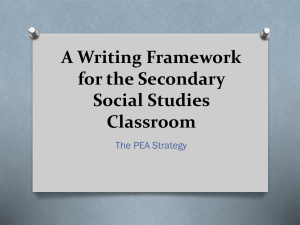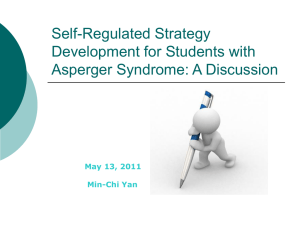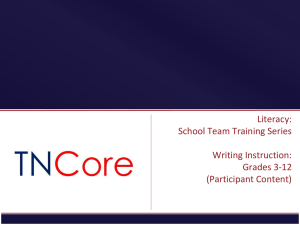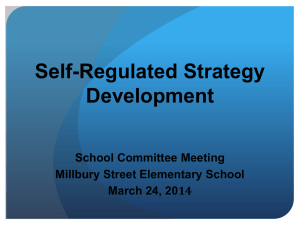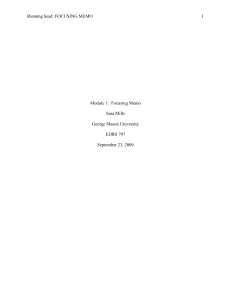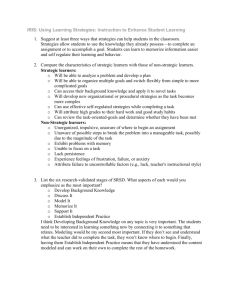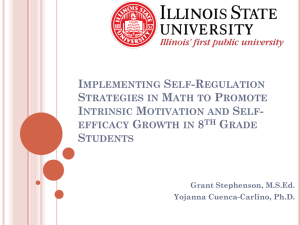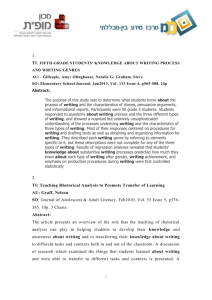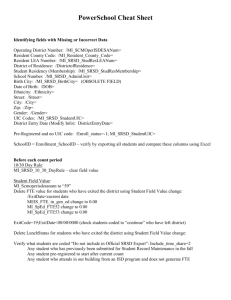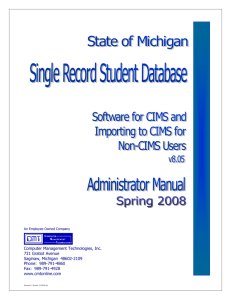Sarah Blount
advertisement
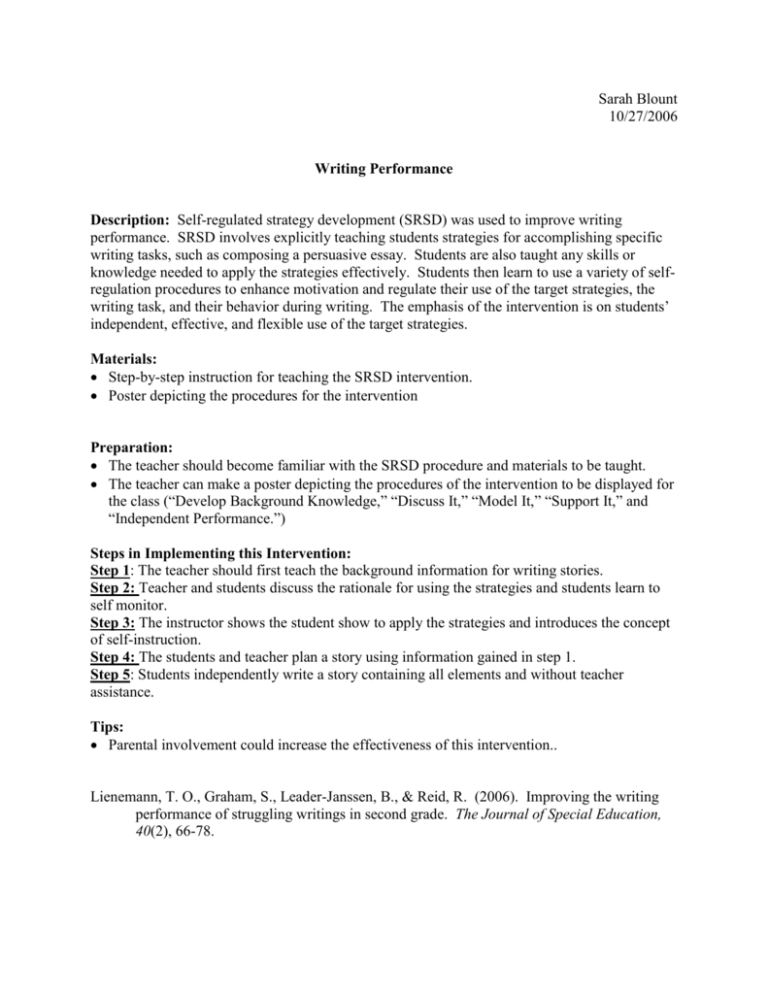
Sarah Blount 10/27/2006 Writing Performance Description: Self-regulated strategy development (SRSD) was used to improve writing performance. SRSD involves explicitly teaching students strategies for accomplishing specific writing tasks, such as composing a persuasive essay. Students are also taught any skills or knowledge needed to apply the strategies effectively. Students then learn to use a variety of selfregulation procedures to enhance motivation and regulate their use of the target strategies, the writing task, and their behavior during writing. The emphasis of the intervention is on students’ independent, effective, and flexible use of the target strategies. Materials: Step-by-step instruction for teaching the SRSD intervention. Poster depicting the procedures for the intervention Preparation: The teacher should become familiar with the SRSD procedure and materials to be taught. The teacher can make a poster depicting the procedures of the intervention to be displayed for the class (“Develop Background Knowledge,” “Discuss It,” “Model It,” “Support It,” and “Independent Performance.”) Steps in Implementing this Intervention: Step 1: The teacher should first teach the background information for writing stories. Step 2: Teacher and students discuss the rationale for using the strategies and students learn to self monitor. Step 3: The instructor shows the student show to apply the strategies and introduces the concept of self-instruction. Step 4: The students and teacher plan a story using information gained in step 1. Step 5: Students independently write a story containing all elements and without teacher assistance. Tips: Parental involvement could increase the effectiveness of this intervention.. Lienemann, T. O., Graham, S., Leader-Janssen, B., & Reid, R. (2006). Improving the writing performance of struggling writings in second grade. The Journal of Special Education, 40(2), 66-78. Writing Performance Participants Participants were 6 second grade students divided into two groups. Intervention SRSD was used to teach a story planning and writing strategy. Students were taught a task-specific strategy for accomplishing these academic problems. Self-regulation was advanced by teaching students how to use goal settings, self-monitoring, self-instruction, and selfreinforcement to manage their use of the strategy, the task, and their behaviors. Knowledge was enhanced by teaching any information students need to use the strategy. Instruction is scaffolded so that responsibility for applying and recruiting the strategy and self-regulation procedures gradually shifts from the instructor to students. Each participant received 30 to 45 minutes of individualized instructional sessions until mastery was achieved. Mastery was defined as independently writing a story with all story elements. For each group, SRSD instruction was systematically and sequentially introduced to one participant at a time. Prior to the introduction of SRSD instruction, each student’s writing performance was measured over time to establish a baseline of typical writing performance. During baseline, each child wrote 3 or more stories to establish pretreatment performance. Then, each student received SRSD instruction one at a time. Instruction did not begin for the next child until the first child demonstrated independent mastery of the strategy (resulting in a story with all of the basic story elements). Then each student wrote 3 to 4 stories immediately following SRSD instruction. Maintenance probes were conducted at 2 and 4 weeks after the end of the independent performance phase. To assess generalization related to reading comprehension, students were asked to read and retell narrative stories during baseline, instruction, independent performance, and maintenance phases. The first stage of instruction was for each student to acquire the knowledge and skills needed to apply the planning and writing strategies (using POW: Pick my ideas, Organize my thoughts, Write and say more). The mnemonic device WWW (What = 2, How = 2) was used for remembering the parts of a story. In the second stage, students discussed the rationale for using the strategy and self-monitoring was introduced. Students read previously written stories from baseline to determine how many basic story elements ere included. Students also discussed how using POW and WWW could improve story writing. In the third stage of instruction, the instructor showed the student how to apply the strategies and introduced the concept of selfinstructions. In the next stage, student and teacher engage in a collaborative writing experience. First, the instructor and student set a goal to include all 7 elements in the story. Next, they planned the story together. Third, the student wrote a story. Fourth, after the story was completed, the student identified each story element by highlighting it. Last, the teacher and student discussed how the strategies helped the child write a better story. The student was slowly weaned from relying on a planning graphic organizer. The final stage was reached when the student could successfully write a story with all elements without assistance from the instructor. Integrity Instructors were trained in how to apply instructional procedures until they could implement them without error. Second, each instructor had a checklist with step-by-step instructions for each lesson. Third, 25% of all lessons were observed by two people. The observers also had the same checklist. Fidelity was 100%. Results This study demonstrated that teaching strategies for planning and writing text, the knowledge needed for these strategies, and procedures for fostering self-regulation and motivation was effective with these children. Recommendations This intervention should be utilized by teachers. It may be difficult to implement this intervention with individual students but might be useful for whole-class implementation.
